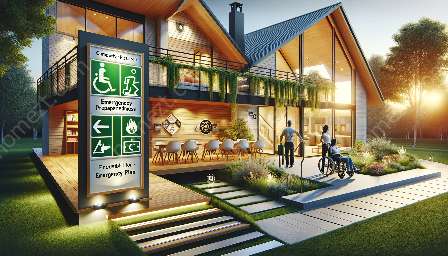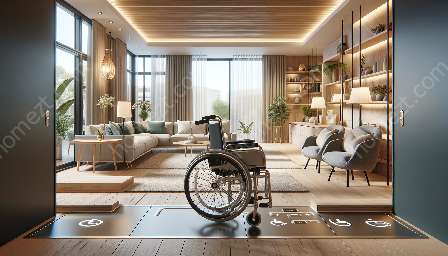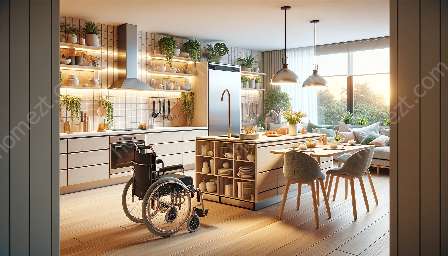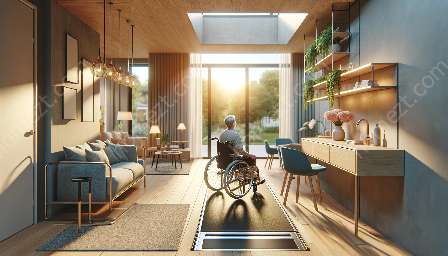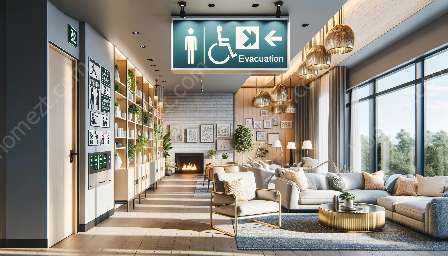Creating effective building evacuation plans for disabled persons is crucial for ensuring the safety and well-being of individuals with disabilities during emergency situations. In this comprehensive guide, we will explore the essential steps and considerations for developing evacuation plans that prioritize the needs of people with disabilities. We will also delve into the broader topic of home safety for people with disabilities and examine the intersection of home safety and security in the context of accommodating individuals with diverse mobility and accessibility requirements.
Understanding the Importance of Inclusive Evacuation Plans
When developing evacuation plans for buildings, it is essential to take into account the unique challenges and requirements of individuals with disabilities. Many traditional evacuation strategies may not adequately address the needs of people with mobility limitations, sensory impairments, or other disabilities. By prioritizing inclusivity in evacuation planning, building owners and managers can ensure that everyone, regardless of their physical abilities, has equal access to safe and timely evacuation routes.
Key Considerations for Evacuation Planning
- Assessment of Individual Needs: To create an effective evacuation plan, it is important to assess the specific needs and capabilities of each person with a disability who may be present in the building. This includes considering mobility aids, communication requirements, and any other accommodations necessary for safe evacuation.
- Accessible Routes and Exits: Identifying accessible routes and exits is crucial for ensuring that individuals with disabilities can evacuate safely. Clear signage, unobstructed pathways, and accessible exits must be prioritized to facilitate efficient and secure evacuation.
- Communication and Signage: Effective communication strategies, including visual and auditory cues, must be integrated into the evacuation plan to ensure that individuals with sensory impairments can receive timely and accurate information during emergencies.
Home Safety for People with Disabilities
Home safety for people with disabilities encompasses a wide range of considerations, from physical accessibility and fall prevention to emergency preparedness. When creating building evacuation plans for disabled persons, it is essential to extend the focus to the broader context of home safety. This includes assessing the accessibility of the home environment, installing assistive devices, and developing personalized emergency preparedness protocols tailored to the specific needs of individuals with disabilities.
Adapting Home Environments for Safety and Security
Making homes safe and secure for individuals with disabilities involves various proactive measures, such as installing grab bars, ramps, and accessible bathroom fixtures. Additionally, implementing home security systems and emergency alert mechanisms tailored to the unique requirements of people with disabilities can enhance overall safety and peace of mind.
Integration of Accessibility and Security Measures
When addressing home safety and security in the context of disability, it is crucial to integrate accessibility features with traditional security measures. This includes ensuring that alarms, lighting, and surveillance systems are optimized to meet the needs of individuals with diverse disabilities, thus creating a secure living environment that is inclusive and supportive.
Conclusion
Developing effective building evacuation plans for disabled persons requires a comprehensive understanding of the specific needs and challenges faced by individuals with disabilities. By prioritizing inclusivity, accessibility, and proactive safety measures, building owners and stakeholders can create evacuation plans that promote the well-being of all occupants, regardless of their physical abilities. Additionally, extending the focus to encompass home safety and security for people with disabilities enables a holistic approach to ensuring the safety and comfort of individuals within their living environments.
By implementing the recommendations and considerations outlined in this guide, stakeholders can contribute to creating more inclusive and secure living and working spaces, where individuals with disabilities are afforded the same level of protection and support as their able-bodied counterparts.



